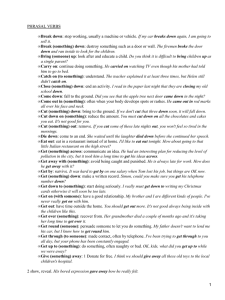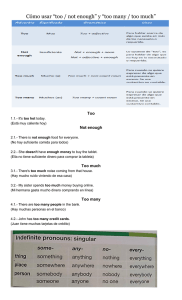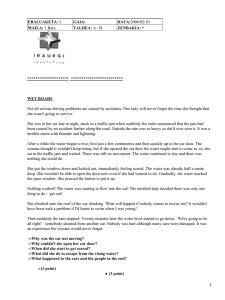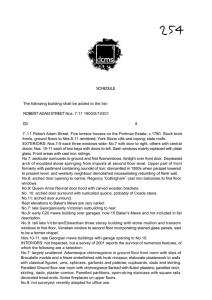IFSA CNY Presentation: How Residential Feng Shui was used in
Anuncio
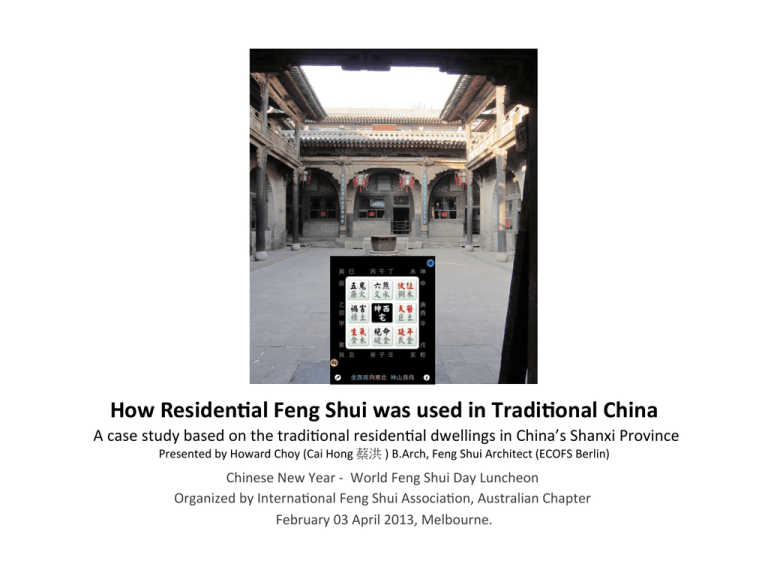
How Residen+al Feng Shui was used in Tradi+onal China A case study based on the tradi1onal residen1al dwellings in China’s Shanxi Province Presented by Howard Choy (Cai Hong 蔡洪 ) B.Arch, Feng Shui Architect (ECOFS Berlin) Feng Shui Day Luncheon Chinese New Year -­‐ World Organized by Interna1onal Feng Shui Associa1on, Australian Chapter February 03 April 2013, Melbourne. There are many myths in Feng Shui that are just not true, a classic one is the myth about Bazhai and it went like this: “Apparently Emperor Xuan Zong 玄宗 (685-­‐762 CE) of the Tang Dynasty ordered Yi Xing 一行, a Buddhist monk, astronomer and royal advisor to the king, to devise a false method for the ‘barbarian’ neighbors so they would learn the false Feng Shui and this was the Bazhai School of Feng Shui as we know it today.” (Ref: Absolutely Feng Shui) In this presenta1on I would like to provide some first hand evidence that Bazhai Feng Shui was prac1ced extensively and was quite popular in Shanxi Province to the North-­‐West of China, where I visited earlier this year in January, as part of my reconnaissance research for the up-­‐coming Feng Shui Study Tour of China in October. In par1cular I did research on the tradi1onal houses in the old city of Datong 大同 and visited the Wangjia Dayuan 王家大院 (The Wang’s Grand Courtyard Residen1al Complex), not very far from the well-­‐preserved ancient city of Pingyao, also the Yu Family Stone Village 于家石 頭村 and saw first hand how Bazhai is used in the planning of tradi1onal houses in this area, not unlike the Suheyuan in Beijing 北京四合院. Da Tong Old City Wang’s Grand Courtyard Yu Family Stone Village 大遊年歌 Qian 乾六天五禍 延生, Kan 坎五天生延 禍六; Gen 艮六 禍生延天五, Zhen 震延生禍 五天六; Xun 巽天五六禍生 延, Li 離六五 延禍生天; Kun 坤天延 生禍五六, Dui 兌生禍延 六五天. In this part of China, the Da Younian Ge (The Song of the Big Yearly Cycles – a Bazhai formula to locate the direc1ons of the 8 Wandering Qi: Fu Wei, Sheng Qi, Tian Yi, Yan Nian, Ju Ming, Huo Hai, Liu Sha and Wu Gui in a house) was oien used to layout the floor plans of a tradi1onal house, in par1cular a local version of the Siheyuan (the Chinese courtyard houses), Evolved from the local cave dwellings But before I get onto these local examples, I like to go back to the basics to show that the principles used to make up the system are quite simple and they follow the classical Yi-­‐Li or the Principles of Changes. For example: Bazhai or the Eight-­‐House represents the Bagua or the Eight Trigrams, derived from the Taiji. Taiji – Liang Yi – Sixiang – Bagua. The eight Trigrams are then correlated to the eight direc1ons in a Luoshu diagram according to the Later Heaven sequence. Qian (6) is located to the NW, Kan (1) to the North, Gen (8) to the NE, Zhen (3) to the East, Xun (4) to the SE, Li (9) to the South, Kun (2) to the SW and Dui (7) to the West, with the Luoshu numbers showed in brackets. The direc1ons are then divided into two groups -­‐ the East Four and the West Four group, with the East Four group occupied the East (Zhen), SE (Xun), North (Kan) and South (Li), and the West Four group occupied the West (Dui), SW (Kun), NW (Qian) and NE (Gen) direc1ons. Loca1on of 8 Wandering Qi for E4 Group Loca1on of 8 Wandering Qi for W4 Group One theory as to the loca1on of East Four and West Four grouping is based on using the Early Heaven Bagua with the Later Heaven Luoshu Numbers by applying the Yi-­‐Li principle, “Early Heaven is the Ti (Principle) and Later Heaven is the Yong (Func1on)”. If we look at the diagram below, we can see the Hetu pairing of 4,9 Metal generates 1,6 Water and 3,8 Wood generates 2,7 Fire, thus giving the two groups of Zhen, Li, Xun and Kan, with Qian, Dui, Kun and Gen, making them the East Four and West Four grouping respec1vely, and forming the two arms of a cross. The jus1fica1on for this explana1on is the Yang facings need Yin water and the Yin facings need Yang water to make the intercourse of Yin and Yang complete. The Yang in this case refers to the odd numbers with their related Gua, namely 9 (Qian), 1 (Kun), 7 (Kan) and 3 (Li), while the Yin refers to the even numbers with their related Gua, namely 6 (Gen), 4 (Dui), 8 (Zhen) and 2 (Xun). As shown in the diagram, each Yang number faces a Yin number and vice versa, so for this reason, it is not desirable to mix neither the “East” with the “West” nor the “West” with the “East”. The 8 Wandering Qi has its origin in the 9 Stars of the Big Dipper and each is given an associated Element. The correla1ons allowed the ancient Chinese to “bring Heaven onto Earth”, so the Microcosm of Earth is reflected in the Macrocosm of Heaven. As men1oned earlier, the Song of the Big Yearly Cycles is used to set out the loca1on of the 8 Wandering Qi, but in fact the sequence is based on Yao-­‐line changes star1ng with the Trigram located at the Fu Wei. Change all 3 Yao = Yan Nian; Change only the upper Yao = Sheng Qi; Change the middle and lower Yao = Tian Yi; Change upper and middle Yao = Wu Gui; Change the upper and lower Yao = Liu Sha; Change only the middle Yao = Ju Ming; Change only the lower Yao= Huo Hai. As showed in the illustra1on on the next slide (Ref: The Ancient City of Datong and its Fold Dwellings by Zhang Cheng-­‐Fu), there are 6 types of street door configura1ons, even though all the courtyard house are sipng on the North facing the South to catch the warm sun and to protect the house from the cold wind, the street door loca1on varied from house to house according to the streetscape. 1A 2 1B 3 4 5 The 6 types are listed as follow: 1A) Xun Door, Kan Master, with door open to the South. 1B) Xun Door, Kan Master, with door open to the East. 2) Li Door, Kan Master. 3) Kun Door, Qian Master. 4) Gen Door, Qian Master. 5) Qian Door Gen Master. Altogether, the doors are located only in 5 palaces, because in this way the main room (the Master) can receive the warm sun from the South, SE or SW. The Compass methods are always associated with prac1cal considera1ons. There is a natural sciences considera1on to go with FS calcula1ons, Form and Compass FS always work together in Classical FS.. Yangzhai Sanyao 阳宅三要 1)Yangzhai Sanyao or The Three Requirements of Yang Dwellings was wriqen by Zhao Jiu-­‐Feng 赵九峰 in 1876. 2) It used the front door direc1on as the Fu Wei to locate the Eight Qi from the Da Younian Ge 大游年歌 or the Song of the Big Yearly Cycles. 3) The three requirements are called the Door (Men 門), the Master (Zhu 主) and the Stove (Zao 灶). The Door is where enters the house from the road, the Master is the main part of a house and the Stove I where cooking and ea1ng are done. 4) First look at the Door, then look at the Master and the Stove, if the Door and the Master mutually generate each other then it is auspicious, if they control each other then it is harmful. If the three mutually generate and do not control each other, and the Ming also matches, then there is wealth and prosperity. Xun Door Kan Master (or Kan Zhai). Use the Xun Door as the Fu Wei, according to the Song of the Big Yearly Cycles, the sequence of the 8 Wandering Stars goes clock-­‐wise in the order of “Tian Yi, Wu Gui, Liu Sha, Huo Hai, Sheng Qi, Ju Ming and Yan Nian”. The room to the South (the Stove), the Li Palace received the Tian Yi (Earth) Star; the room to the North (the Master) received the Sheng Qi (Wood) Star. The Door and the Master have the same Elements and the Master controls the Stove, so it is considered auspicious and according to the sequence of the Wandering Stars, the Master received the Sheng Qi Star, so it is called a Sheng Qi House, and since the Stove is also located in the good Tian Yi direc1on, then the three stars the Fu (Prosperity), Lu (Officialdom) and Shou (Longevity) all meet together to form a very auspicious home. Li Door Kan Master (or Kan Zhai). Use the Li Door as the Fu Wei, according to the Song of the Big Yearly Cycles, the sequence of the 8 Wandering Stars goes clock-­‐wise in the order of “Liu Sha, Wu Gui, Ju Ming Yan Nian Huo Hai, Sheng Qi, and Tian Yi”. The Kan Master received the Yan Nian Star, so it is called a Yan Nian House, with the North, the East, the SE and the South rooms all located in the auspicious direc1ons, and if the Zhen Stove matches (sipng on Liu Sha facing Yan Nian), then it is a very auspicious house. The “Form” and the “Compass” always go together In the remaining 3 configura1ons, Kun Door Gen Master, Qian Door Gen Master and Gen Door Qian Master, one can see again the Master is located in a direc1on that it can receive the warm sun of the South, so the choice of which Bazhai arrangement to use is based on Form considera1on as well as on the arrangement of the auspicious Wandering Stars, so each house is not only ritually correct but also prac1cally efficient. A local example in the old city of Datong, Shanxi Province (No. 11, Storehouse Lane, Datong) This old house is located with the main rooms facing South and sipng on North. It has the front door off the street located in the Xun (SE) Palace and the Master is located to the North, so it is considered to have a Xun Door and Kan Master and since the Master received the Sheng Qi Wandering Star it is called a Sheng Qi House, with an auspicious Gua Qi arrangement but also prac1cally efficient in terms of solar access, a very important considera1on in Shanxi. Master Stove Door Front door of No 11 Storehouse Lane, Old Datong (Building since demolished to make way for modern high rises) Just inside the front door there is a couplet carved into the wall which says, “The more virtue cul1vated, the more prosperity s1mulated”. A remainder of how moral behavior played a part in one’s fortune and des1ny. Pingyao The second example come from the Wangjia Dayuan 王家大院 (The Wang’s Grand Courtyard Residen1al Complex), located about 30 km NE from the ancient town of Pingyao, also in Shanxi Province. (Reference: The Wang’s Grand Courtyard in Illustra1on by Zhang Xin and Chen Jie.《王家大院》張昕, 陳捷) Here due to the local climate and geography many houses are built into the hill sides and created a unique mix of part cave and part courtyard dwellings. Oien the caves would have an East-­‐West Orienta1on. Diagram to the lei showed the evolu1on of a single cave dwelling into a courtyard arrangement, Feng Shui is part of this sophis1ca1on process from a simple unit to a more complex arrangement of units. Photo to the right showed a two storey cave dwelling with a courtyard infront. It sits on the north and faces the south to catch the warm sun and to protect the dwelling from the cold north wind. C D B E A F Even with the caves located facing East and West with a connec1ng road running from North to South, the loca1on of the front door off the street and the main building in the complex are organized in such a way that each house can obtain an auspicious Bazhai arrangement. Above showed a typical layout of a cave-­‐ courtyard complex called the Goudong Heyuan 沟東合院 in the same village. A showed an ideal Xun Door and Kan Master arrangement which gives an auspicious Sheng Qi House. B and C showed a Gen Door and Dui Master arrangement which gives an auspicious Yan Nian House when the caves are facing East. D and E Showed a Qian Door and Dui Master arrangement which gives again a Sheng Qi House when the caves are facing West. F showed a Wu Door and Zhen Master arrangement which also gives a Sheng Qi House. The East Dwelling (Dong Zhai 東宅) and the West Dwelling (Xi Zhai 西宅) in the Wang’s Grand Courtyard has 3 courtyards each with 4 rows of building with the back higher than the front, hence it is classified as an “Ac1ve Dwelling” 動宅. The layout followed the recommenda1ons as wriqen down in Chapter 3 of the “Yangzhai Sanyao” 陽宅三要 book wriqen by Zhao Jiu-­‐Feng 趙九峰. The arrangement chosen is called a Xun Door, Kan Master with a Zhen Stove and because all the 3 essen1al requirement of a dwelling, the Door, the Master and the Stove are all located in the East Four direc1ons, it is considered a very auspicious house. A model of the Wangjia Dayuan showing how the buildings stepped back into the hill side with cave rooms at the rear. The middle courtyard Main Entrance to East Dwelling and West Dwelling of the Wangjia Dayuan Bedroom Interior at the main part of the house. Sipng Room Interior In less wealthy dwellings like this on in the Yu Family Stone Village 于家石頭村, the single courtyard with its Xun Entrance can experience “Chong Sha” (Sha of Rushing-­‐at of a straight line), a screen wall is oien used to protect the entrance into the courtyard, thus giving the courtyard a more secluded atmosphere of privacy Most of the courtyard houses in Shanxi Province takes its inspira1on from the Beijing Shiheyaun 三合院 showed below which also has a Xun Door and Kan Master arrangement as wriqen up in books like the Yangzhai Shishu 陽宅十書 (The 10 Books of Yang Dwelling) and Yangzhai Sanyao 陽宅三要 (The 3 Essen1al Requirements of a Yang Dwelling), which used the Front Door as the Wu Wei to set out the 8 Wandering Qi. However, there is another book called the “Bazhai Mingjing” 八宅明鏡 (The Bright Mirror of Eight Houses) showed here on the right, which uses the sipng direc1on of a house as its Fu Wei to set out the 8 Wandering Qi as compared the the Yangzhai Sanyao 陽宅三要 (The Essen1al Requirements of a Yang Dwelling) showed here to the lei which uses the front door as its Fu Wei to set out the 8 Wandering Qi according to the Song of the Big Yearly Cycles. But no maqer how the 8 Wandering Qi is located, the Form considera1on of arranging the main living areas towards the warm sun and protect the house from the cold north wind always applied to residen1al dwellings in Shanxi Provence and elsewhere in China, so the Form and Compass Feng Shui considera1ons will ensure that not only the house is ritually correct but prac1cally efficient as well. As we can see from the examples, Bazhai is not a made-­‐up Feng Shui method used to fool the barbarians. Feng Shui is a mixture of applied natural sciences and applied humani1es, to be prac1cally efficient and ritually correct (that is to sa1sfy our personal needs and to connect us to our environment emo1onally and spiritually) is what we aim to do in Feng Shui, whether it is in the past or at present. Thank you for listening Master-­‐Course on Feng Shui with Howard Choy, Feng Shui Architect and Consultant Sydney and Berlin Melbourne and Sydney: February, 2014 Howard Choy (Cai Hong 蔡洪)B.Arch (UNSW) is a prac1cing Australian Feng Shui Architect now base in Berlin. He is a China trained Feng Shui expert/teacher having more than 30 years of experience of prac1cing and teaching Feng Shui. He was born in China and migrated to Australia at an early age. In the late 70s he studied Feng Shui under the personal guidance of Master Ren Zhi-­‐Lin in Hong Kong. Since 1992 Howard has been working with ter1ary ins1tu1ons in China, Hong Kong and Germany on Feng Shui research. He is a willing teacher to shares his knowledge and experience with his students. Howard is the Principal of the European College of Feng Shui (ECOFS) and a director of ECOFS Consul1ng and ar-­‐qi-­‐tektur, Feng Shui architects and Planners based in Berlin. His Australian clients include Murdoch Magazines, Speedo Australia, The Star Hotel and Casino, Sydney Darling Harbor Authority and the Council of the City of Sydney. “Howard is a rare gem we are lucky to have. I appreciate and admire his wisdom, integrity and passion. The presenta<on was interes<ng, well paced and enjoyable.” – Tyler Each year around the Chinese New Year’s 1me, Howard returns to Australia to see his family and to run a workshop in Melbourne and Sydney. The subject is oien depend on students’ interest and each year it will be different, please contact his organizers listed here for further details. Melbourne Organizer: Jane Langof, Director of Feng Shui Concepts Email: [email protected] Telephone: +61 412 002 757 Sydney Organizer: Jane Dempster-­‐Smith, Principal Consultant of Feng Huang Consul1ng Email: [email protected] Telephone: +61 400 982 441 Howard Choy (Cai Hong 蔡洪) B.Arch. Feng Shui Architect Principal: European College of Feng Shui (ECOFS) Berlin hqp://fengshui-­‐college.org/ hqp://howardchoy.worpress.com/ ar.qi.tektur -­‐ Feng Shui Architects -­‐ Sydney and Berlin hqp://www.arqitektur.com/ Email: [email protected]
